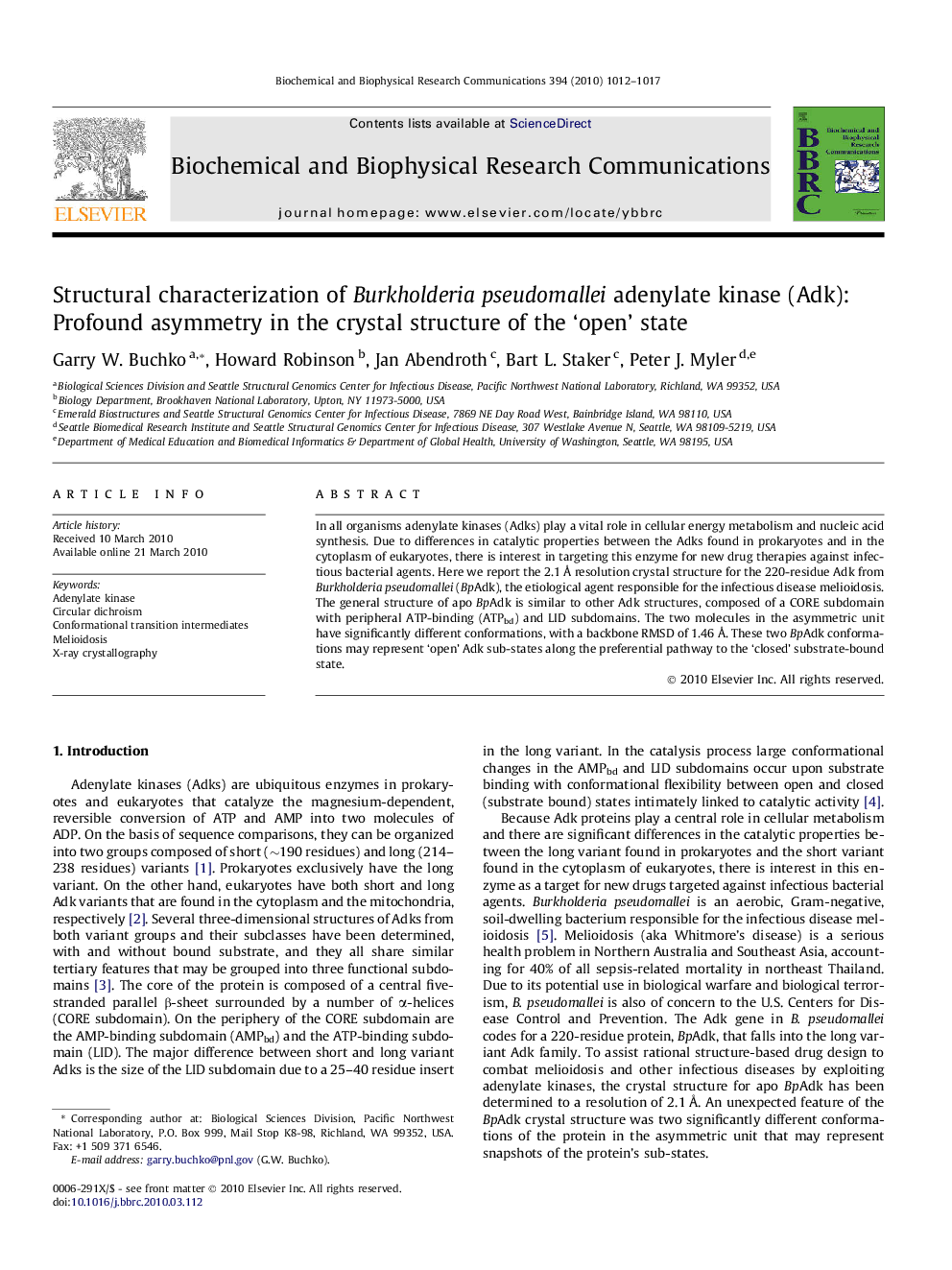| Article ID | Journal | Published Year | Pages | File Type |
|---|---|---|---|---|
| 1931790 | Biochemical and Biophysical Research Communications | 2010 | 6 Pages |
In all organisms adenylate kinases (Adks) play a vital role in cellular energy metabolism and nucleic acid synthesis. Due to differences in catalytic properties between the Adks found in prokaryotes and in the cytoplasm of eukaryotes, there is interest in targeting this enzyme for new drug therapies against infectious bacterial agents. Here we report the 2.1 Å resolution crystal structure for the 220-residue Adk from Burkholderia pseudomallei (BpAdk), the etiological agent responsible for the infectious disease melioidosis. The general structure of apo BpAdk is similar to other Adk structures, composed of a CORE subdomain with peripheral ATP-binding (ATPbd) and LID subdomains. The two molecules in the asymmetric unit have significantly different conformations, with a backbone RMSD of 1.46 Å. These two BpAdk conformations may represent ‘open’ Adk sub-states along the preferential pathway to the ‘closed’ substrate-bound state.
